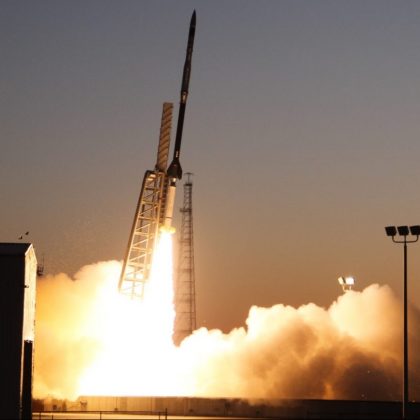Study on the dynamic modelling method of a coilable mast based on hinge equivalent rotational stiffness identification
The Aeronautical Journal October 2025 Vol 129 No 1340
Deployable structures are a class of structures that can be stowed in a narrow envelope during the rocket launch phase and deployed after the spacecraft enters orbit. Coilable masts are among the most commonly used types of deployable structures because of their high packing coefficient and high strength-to-weight ratio. To date, there are many examples of successful in-orbit applications of coilable masts. With the further development of the coilable mast technology, coilable masts have begun to be used in space optical application scenarios for the deployment and support of large focal lengths. Unlike ordinary deployment tasks, the optical applications have higher precision requirements for coilable masts because they are directly related to the alignment accuracy of the optical path. Therefore, a more accurate model of the coilable mast is necessary to predict the dynamic responses of the coilable mast more accurately, which is beneficial to the design and performance evaluation of the optical system containing the coilable mast.
A typical coilable mast consists of three longerons and a series of battens, diagonal cables and hinges. The methods for modelling longerons, battens and diagonal cables are mature. The problem encountered in modelling hinges is a key issue that affects the accuracy of the coilable mast model. Therefore, it is necessary to develop modelling methods for coilable masts that consider the influence of hinges to predict their dynamic response more accurately. On the basis of existing studies, hinge models can be categorised into three types: permanent contact models, two-state models and three-state models. The permanent contact model ignores hinge clearances and assumes that the hinges are always in contact during motion. The two-state model considers the effects of two states of hinge clearances, separation and contact, on the dynamic response of structures. The three-state model considers one more state of the hinge clearances, the collision state, than the two-state model does.
However, these models are not suitable for modelling the hinges of coilable masts. Since the hinge clearances of coilable masts can be almost eliminated under the preloading of diagonal cables, so the contact and collision nonlinearities caused by hinge clearances are not obvious. For coilable masts, the most important feature of their hinges is the rotational effect. This is because the coilable mast hinges are unlocked when fully deployed, and their rotational motion is limited to only four connected diagonal cables. Under this weak constraint, the hinges of the coilable masts are more prone to rotation under external loads. Therefore, the rotation problem is the primary problem in the dynamic modelling of coilable mast hinges.
In this paper, “Study on the dynamic modelling method of a coilable mast based on hinge equivalent rotational stiffness identification”, the concept of hinge equivalent rotational stiffness of coilable masts is proposed to describe the rotational effect of hinges, and a dynamic modelling method based on the identification of hinge equivalent rotational stiffness is proposed and experimentally verified.

The paper Study on the dynamic modelling method of a coilable mast based on hinge equivalent rotational stiffness identification by Y. Liu, L. Sun, H. Huang, W. Li and X. Zhao appears in Volume 129 Issue 1340 of The Aeronautical Journal and is free to access until the end of October 2025.

The Aeronautical Journal has, for over a century, been the UK’s leading scientific and technical aeronautics Journal and is the world’s oldest Aerospace Journal that remains in production. Published monthly, The Aeronautical Journal draws upon the expertise and resources of The Royal Aeronautical Society providing a world-wide forum for authors from the UK and overseas. Research papers are solicited on all aspects of research, design and development, construction and operation of aircraft and space vehicles. Papers are also welcomed which review, comprehensively, the results of recent research developments in any of the above topics.
The Royal Aeronautical Society is the world’s only professional body dedicated to the entire aerospace community. Established in 1866 to further the art, science and engineering of aeronautics, the Society has been at the forefront of developments ever since.
www.aerosociety.com | National Aerospace Library catalogue & e-books
Book reviews covering academic, scientific and technical books covering aeronautical engineering and topics relating to it can be found here: www.aerosociety.com/news-expertise/national-aerospace-library/book-reviews






